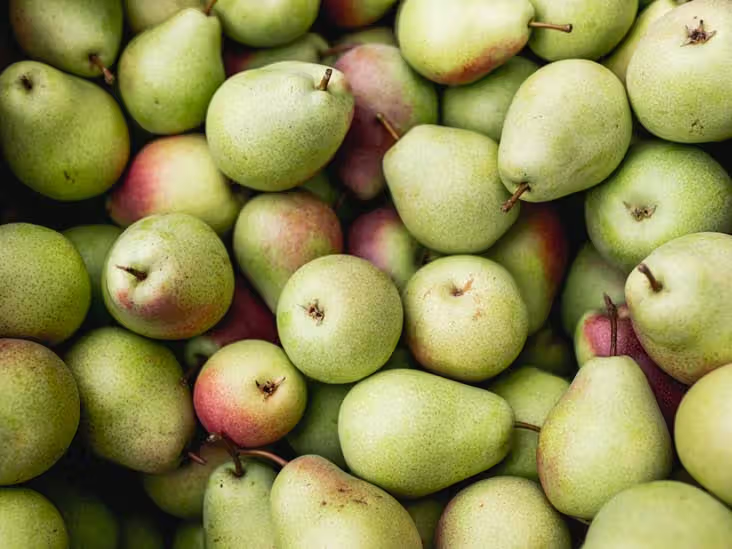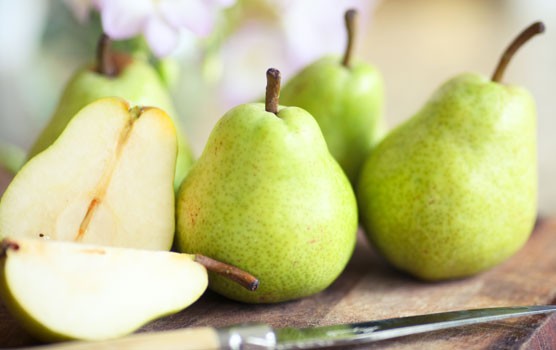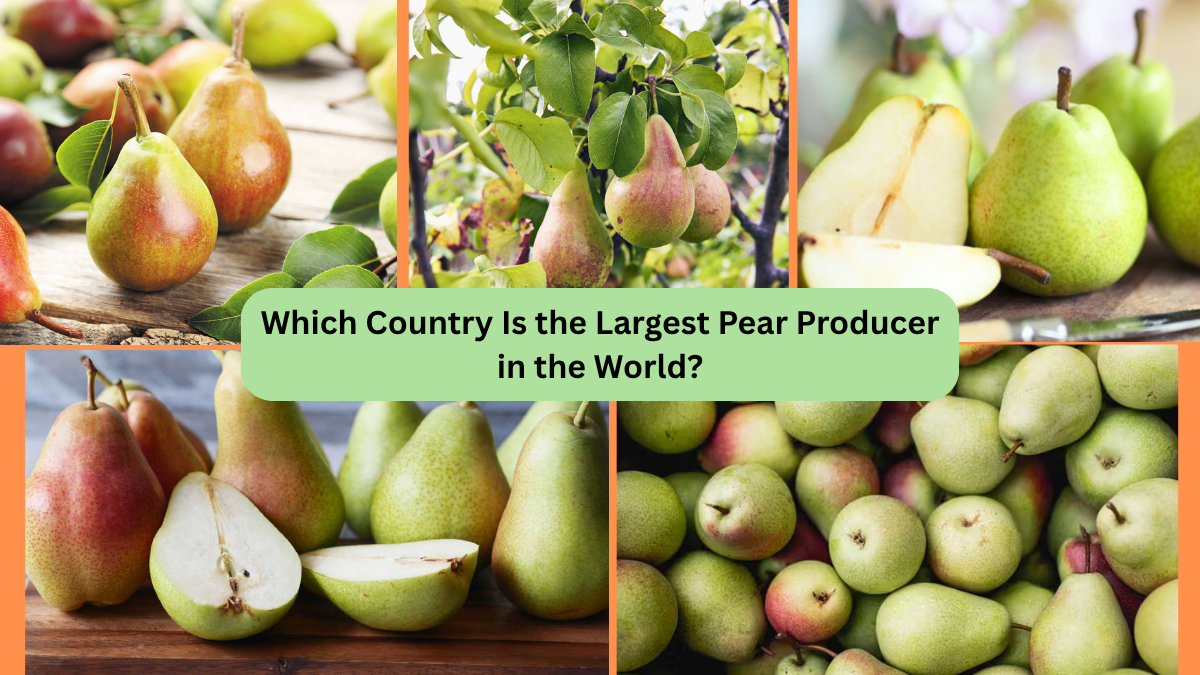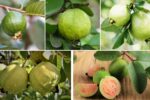Fruits have always been an essential part of human diets, and among them, pears hold a special place for their sweet, crisp, and juicy flavor. From fresh consumption to being featured in desserts, preserves, and beverages, pears are loved worldwide. But have you ever wondered where the majority of the world’s pears come from? Which country leads in producing this beloved fruit?
In this article, we’ll explore the history, cultivation, and global production of pears — and reveal the country that stands tall as the largest pear producer in the world.
A Brief Introduction to Pears

Pears, belonging to the Pyrus genus, are among the oldest cultivated fruits in the world, with historical records tracing their cultivation back over 3,000 years to ancient China and parts of Europe. Today, there are more than 3,000 known varieties of pears, ranging in shape, size, color, and flavor.
The pear is known not just for its delicious taste but also for its nutritional value. It’s packed with dietary fiber, vitamin C, potassium, and antioxidants, making it a popular choice for health-conscious consumers.
Which Country Is the Largest Pear Producer in the World?
China is the undisputed leader when it comes to pear production.
According to the latest reports from the Food and Agriculture Organization (FAO) and global agricultural trade data, China produces more than 70% of the world’s total pear supply. In numbers, China harvests around 17 million metric tons of pears annually, leaving other pear-producing nations far behind.
Why Is China the Leading Pear Producer?

Several factors contribute to China’s dominance in pear production:
1. Ancient Cultivation Tradition
China has been cultivating pears for over three millennia. This long-standing history has given Chinese farmers deep expertise and a rich agricultural heritage that ensures high-quality yields.
2. Ideal Growing Conditions
China’s vast and varied climate — especially in regions like Hebei, Shandong, Shaanxi, and Liaoning — provides the perfect environment for pear cultivation. Mild temperatures, adequate rainfall, and fertile soils support the growth of multiple pear varieties.
3. Diverse Varietal Selection
China is home to a wide range of native and hybrid pear varieties, including the popular Ya Pear (Chinese white pear), Snow Pear, and Fragrant Pear. These varieties cater not just to domestic consumption but also to export markets.
4. Massive Domestic Demand
China’s massive population drives significant domestic demand for fresh fruits, including pears. This ensures a steady, thriving market for pear growers.
5. Expanding Export Markets
China’s pears are highly sought after in international markets, especially in Southeast Asia, Russia, Europe, and the Middle East. Their crisp texture, long shelf life, and appealing sweetness make them a favorite globally.
Major Pear Producing Regions in China
The top pear-producing provinces in China include:
- Hebei: Known for its high-quality Ya Pears.
- Shandong: A hub for both traditional and hybrid pear varieties.
- Shaanxi: Famous for juicy Snow Pears.
- Liaoning: A key exporter of Fragrant Pears.
- Xinjiang: Producing aromatic and export-friendly Fragrant Pears.
These regions benefit from unique microclimates and fertile soils ideal for pear cultivation.
Other Top Pear Producing Countries

While China leads the way, several other nations also make significant contributions to global pear production:
United States
The U.S. produces approximately 650,000 metric tons of pears annually. The Pacific Northwest states — Washington, Oregon, and California — are the primary growing regions. Varieties like Bartlett, Anjou, and Bosc are popular in American markets.
Argentina
Argentina is a major player in the Southern Hemisphere’s pear industry, producing around 600,000 metric tons per year. The Río Negro Valley is the country’s primary pear-producing area, and Argentina is one of the largest exporters to European markets during the Northern Hemisphere’s off-season.
Italy
Italy is Europe’s largest pear producer, harvesting approximately 500,000 metric tons annually. Italian growers focus on varieties like Abate Fetel, Conference, and Williams pears, with Emilia-Romagna being the heart of Italy’s pear production.
Netherlands
The Netherlands produces around 370,000 metric tons of pears annually, specializing in Conference Pears, which are highly valued in European markets.
Turkey
Turkey produces about 450,000 metric tons of pears per year. The country’s diverse climate allows for multiple pear varieties to be grown across different regions.
Global Pear Trade and Consumption
Pears are traded extensively worldwide, both as fresh fruit and in processed forms such as canned pears, juices, and preserves. Global consumption patterns vary:
- China consumes a large portion of its own pear production.
- The United States and Europe import pears from Argentina, Chile, and South Africa during their off-seasons.
- The Middle East and Southeast Asia are growing markets for high-quality pears from China, Italy, and Turkey.
In recent years, global pear consumption has risen steadily due to increasing awareness about healthy eating and the popularity of plant-based diets.
Economic Impact of Pear Production in China

China’s pear industry plays a significant role in its agricultural economy:
- Provides employment to over 10 million people directly and indirectly.
- Contributes billions of dollars in export earnings.
- Supports the development of rural communities through agricultural infrastructure, storage, and logistics.
Pear farming in China is often family-based, with orchards passed down through generations. Modern techniques like controlled-atmosphere storage, drip irrigation, and integrated pest management are increasingly being adopted to improve yield quality and meet international standards.
Challenges Facing the Pear Industry
Despite its dominance, China’s pear industry faces several challenges:
Climate Change
Shifts in weather patterns, droughts, and unseasonal frosts threaten pear yields in some growing regions.
Water Scarcity
Pear trees require significant water resources, and water scarcity in some agricultural areas poses a growing problem.
Market Competition
As countries like Argentina, South Africa, and Chile enhance their pear export capacities, China faces stiffer competition in global markets.
Pest and Disease Management
Like all fruit crops, pears are vulnerable to pests and diseases, necessitating continuous improvements in integrated pest management practices.
The Future of Pear Production

Looking ahead, the global pear industry is expected to grow steadily due to:
- Increasing health consciousness and fresh fruit consumption worldwide.
- Rising demand in emerging markets, particularly in Southeast Asia and the Middle East.
- Innovations in sustainable farming and storage technologies.
- Expansion of organic pear farming practices.
China, with its strong agricultural heritage, abundant resources, and modernizing infrastructure, is well-positioned to maintain its leadership in global pear production while addressing the challenges ahead.
In Conclusion
To sum it up — China is the largest pear producer in the world, accounting for over 70% of global production. Its favorable climate, rich cultivation history, and rapidly growing export markets have cemented its position as a global pear powerhouse.
As demand for pears continues to rise due to their nutritional benefits and versatility, the story of China’s pear industry will remain central to the global fruit trade. Whether fresh, juiced, or preserved, pears from China are enjoyed in households and dining tables across the world.





